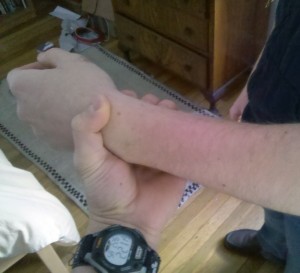KyleG
Forum Crew Member
- 64
- 0
- 0
Couple tricks I use is one use stop lights and stop times to find a pulse and get your bearings. For the BP press hard on your scope to clear out a lot of sounds.
Follow along with the video below to see how to install our site as a web app on your home screen.
Note: This feature may not be available in some browsers.
Clinicals?
Quickly obtain a baseline BP prior to loading your pt. then if you cant hear a manual BP while enroute try obtaining a palpated BP this also takes practice but it will give you a ball-park estimate of where the pressure is. (Palpated BP refers to feeling for a radial pulse and follow the radial pulse while utilizing your cuff, when you feel a pulse after deflating the cuff there's your systolic BP, you can not get a diastolic pressure accurately this way however).
-Moods
That means you pick the arm up and "float" it off the gurney. For the radial pulse, support the weight of the wrist with your thumb and 4th and 5th fingers. Your index and middle finger pads are then free to place as much or as little pressure as needed to feel even a weak/thready pulse. If I remember, I'll take a picture of me doing this with a classmate in a couple days. Sometimes it just takes a picture...

Yeah I know how to do BP by palp. They taught it to us briefly in my EMT class, but I won't be able to do that, until I can feel a damn radial pulse in the rig. Sooooo bumpyyyyy
